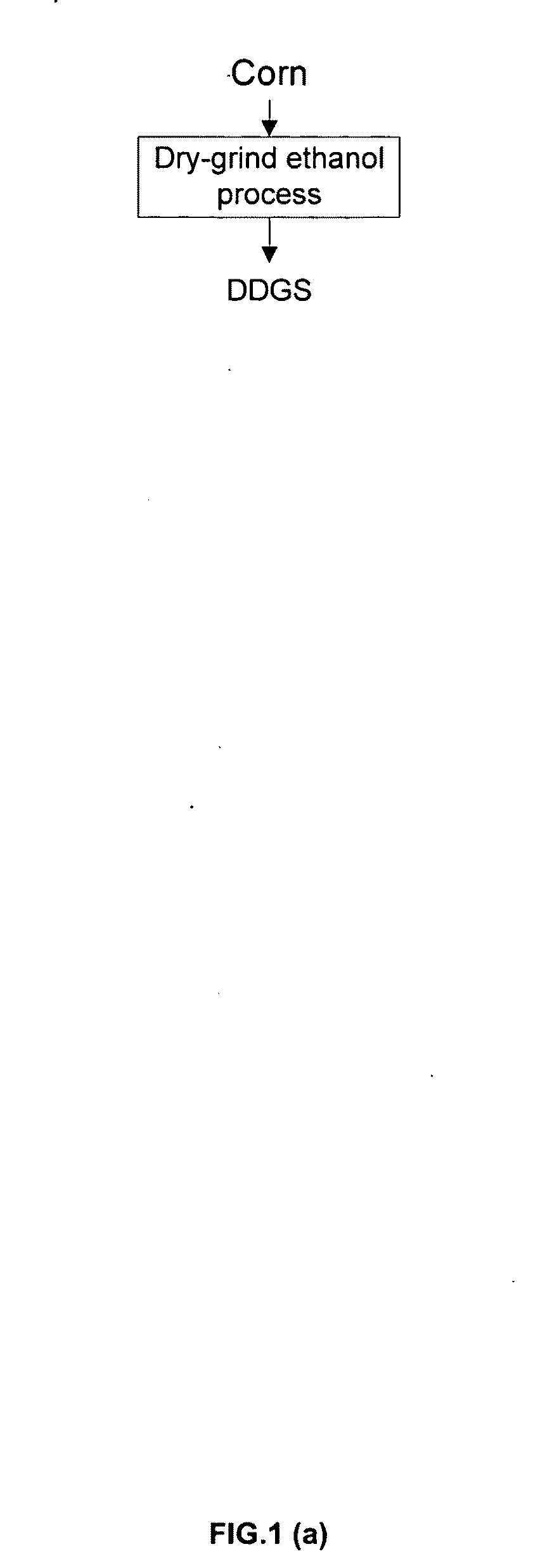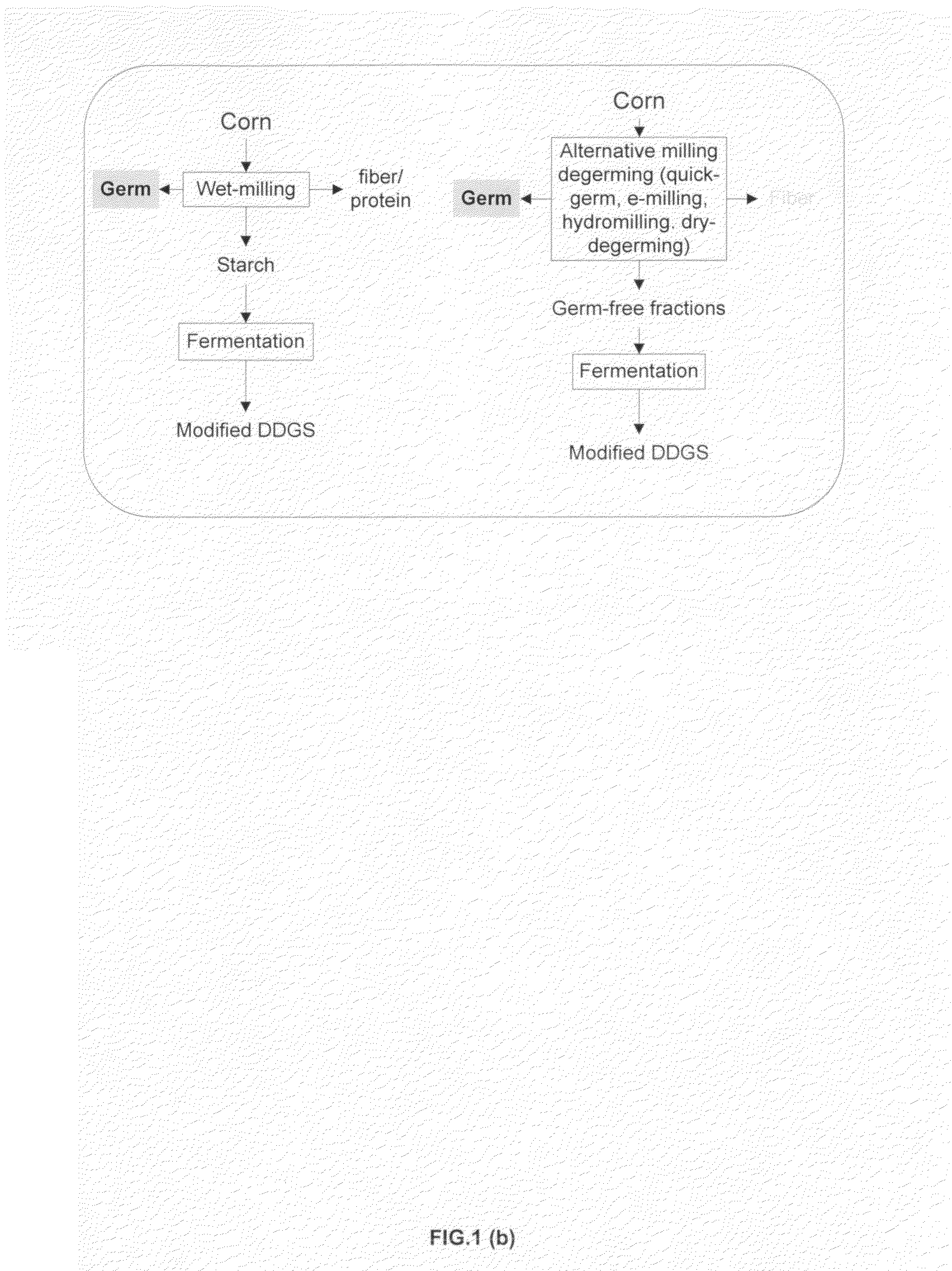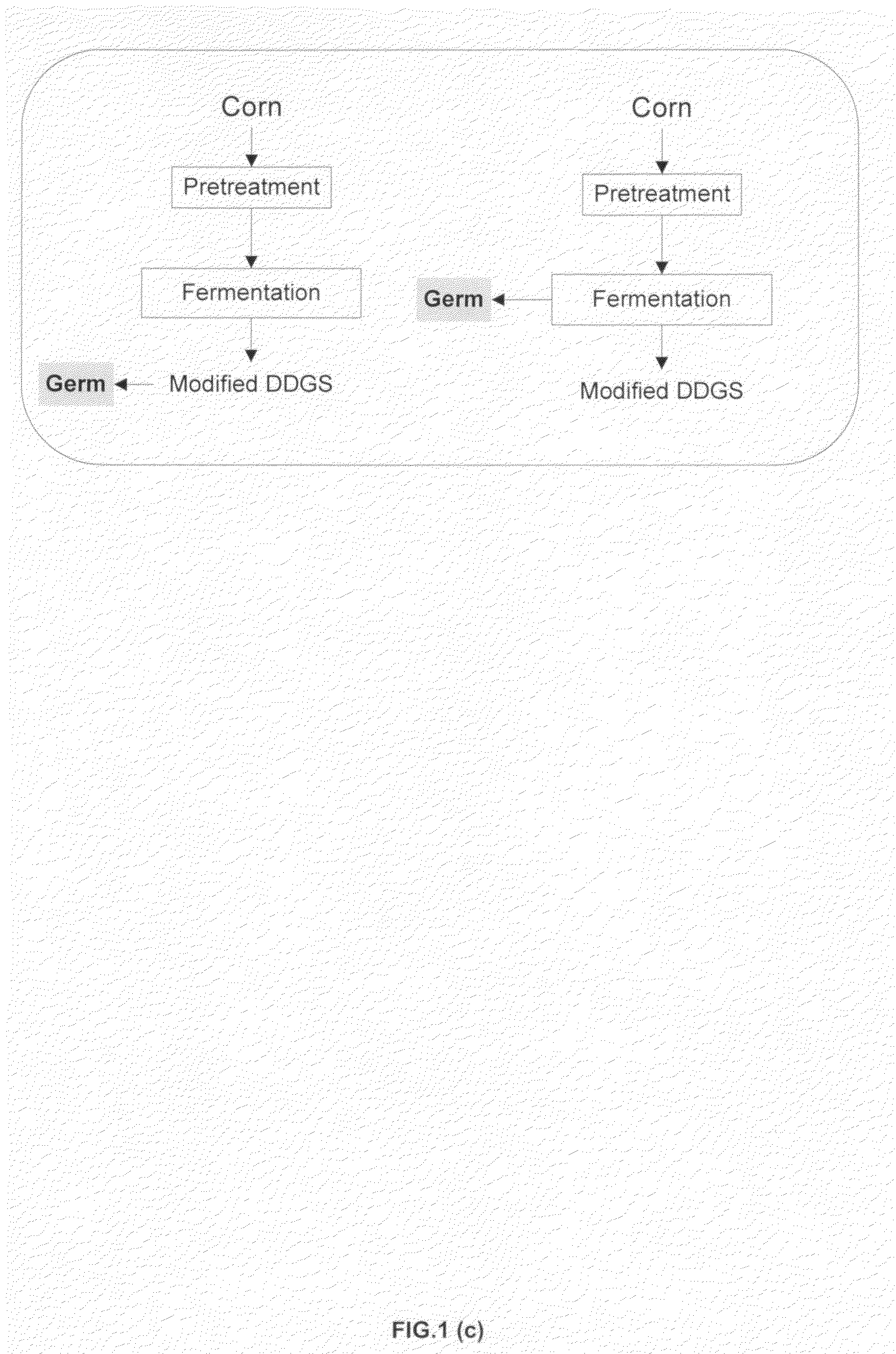Novel corn degerming Ethanol fermentation processes
a technology of corn degerming and ethanol, which is applied in the field of new corn degerming ethanol fermentation processes, can solve the problems of high capital investment, inability to capture the germ, and reduced starch fermentability,
- Summary
- Abstract
- Description
- Claims
- Application Information
AI Technical Summary
Benefits of technology
Problems solved by technology
Method used
Image
Examples
example 1
Tail-End Degerming Ethanol Production Process
[0102]A lab prototype of one of the designs of the tail-end degerming ethanol process of the present invention was run and used to make the samples of FIG. 3. The lab prototype is shown in FIG. 4.
[0103]Corn samples were steeped in water at 60° C. for four hours. The steeped corn kernels were then opened by going through a wet-splitting process. The opened kernels were then liquefied by going through a liquefaction process. The slurry was held at 85° C. for five hours.
[0104]For fermentation, the corn slurry was cooled to 34° C. and held for 60 hours. After 60 hours of fermentation, the finished beer went through a decanting process (manual multiple wash-centrifuge filtration (MWCF) process step with two washes using a customer-designed device). The multiple wash-centrifuge filtration separated the finished beer into thin stillage and Wet cake fractions.
[0105]The thin stillage was put through a centrifugation process at 3000×g for two minut...
experiment 2
Corn Treatment Experiments
Corn Samples and Fermentation Materials
[0108]No. 2 yellow dent corn from the 2007 crop year was acquired from the Heart of Iowa Cooperative (Nevada, Iowa). The corn was cleaned using a KICE laboratory aspirator (Model 6DT4, KICE Metal Products Co. Inc., Wichita, Kans.). Liquid α-amylase SPEZYME Xtra (13,642 α-amylase units / g, optimal pH of 5.0-6.7) and a saccharifying enzyme G-ZYME 480 Ethanol (401 glucoamylase units / g, optimal pH of 4.0-4.5), both from Genencor Inc. (Cedar Rapids, Iowa), were used to liquefy and saccharify the corn slurry, respectively. Lactrol (462 g of virginiamycin bioactivity / lb), an antibiotic extract, was from PhibroChem (Ridgefield Park, N.J.). Dry yeast (S. cerevisiae) Ethanol Red was acquired from Fermentis, a division of Lesaffre Yeast Corp. (Headland, Ala.). Urea was supplied by Keytrade USA Inc. (Kordova, Tenn.). All these fermentation materials were of industrial grade.
Corn Treatment
[0109]Five degerming treatments were studied...
PUM
| Property | Measurement | Unit |
|---|---|---|
| temperature | aaaaa | aaaaa |
| pressure | aaaaa | aaaaa |
| temperature | aaaaa | aaaaa |
Abstract
Description
Claims
Application Information
 Login to View More
Login to View More - R&D
- Intellectual Property
- Life Sciences
- Materials
- Tech Scout
- Unparalleled Data Quality
- Higher Quality Content
- 60% Fewer Hallucinations
Browse by: Latest US Patents, China's latest patents, Technical Efficacy Thesaurus, Application Domain, Technology Topic, Popular Technical Reports.
© 2025 PatSnap. All rights reserved.Legal|Privacy policy|Modern Slavery Act Transparency Statement|Sitemap|About US| Contact US: help@patsnap.com



